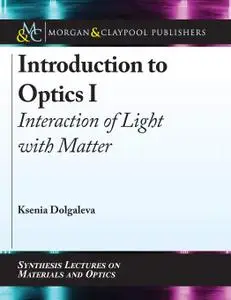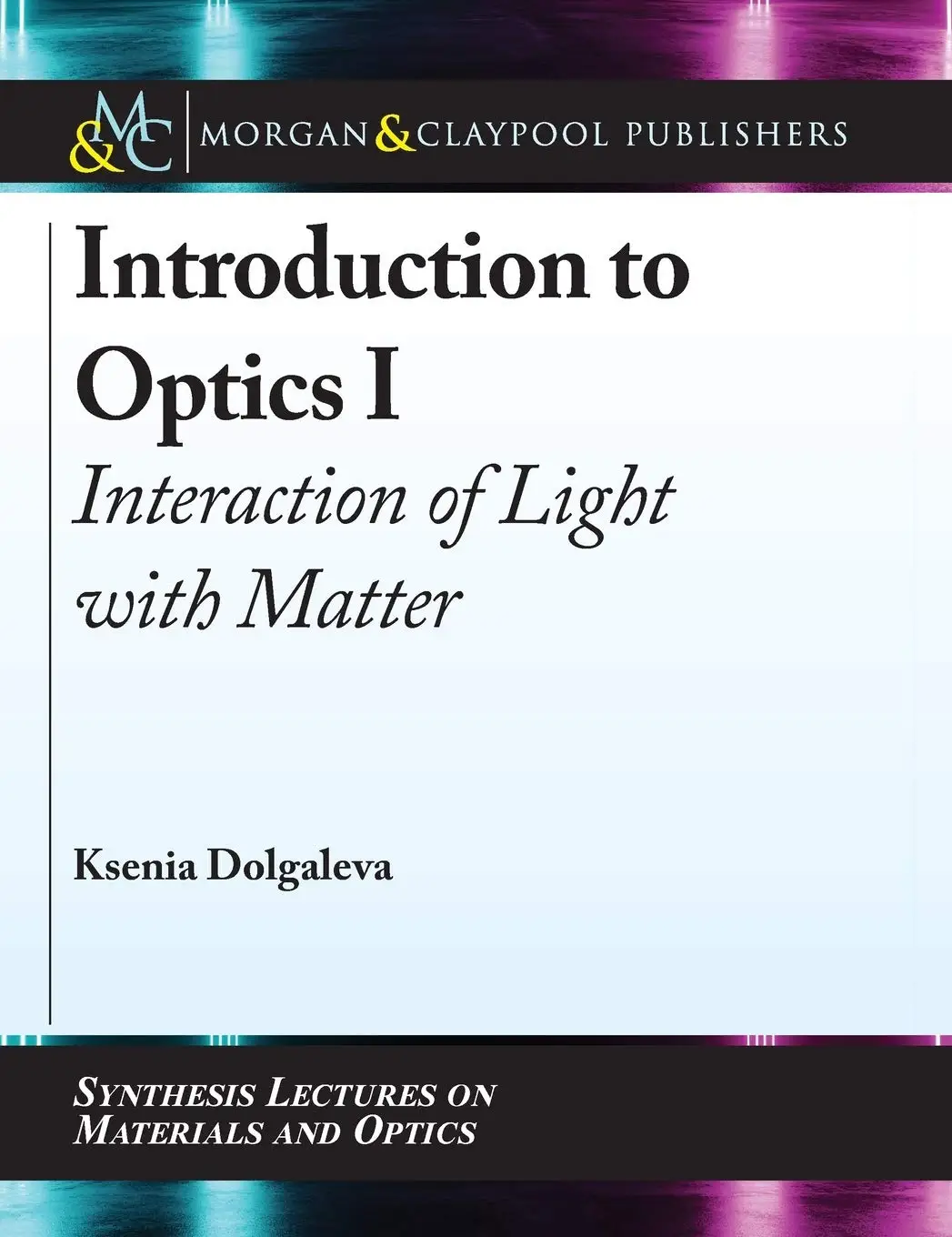Introduction to Optics: Interaction of Light With Matter
Morgan & Claypool | English | 2021 | ISBN-10: 1681739836 | 111 pages | PDF | 28.45 MB
Morgan & Claypool | English | 2021 | ISBN-10: 1681739836 | 111 pages | PDF | 28.45 MB
by Ksenia Dolgaleva (Author)
This book, Introduction to Optics I: Interaction of Light with Matter, is the first book in a series of four covering the introduction to optics and optical components. The author's targeted goal for this series is to provide clarity for the reader by addressing common difficulties encountered while trying to understand various optics concepts. This first book is organized and written in a way that is easy to follow, and is meant to be an excellent first book on optics, eventually leading the way for further study. Those with technical backgrounds as well as undergraduate students studying optics for the first time can benefit from this book series.
The current book includes three chapters on light and its characteristics (Chapter 1), on matter from the standpoint of optics (Chapter 2), and on the interaction of light with matter (Chapter 3). Among the characteristics of light, the ones characterizing its speed, color, and strength are covered. The polarization of light will be covered in the next book of the series, where we discuss optical components. Chapter 2 discusses various atomic and molecular transitions activated by light (optical transitions). Different kinds of natural bulk material media are described: crystalline and amorphous, atomic and molecular, conductive and insulating. Chapter 3 on the interaction of light with matter describes naturally occurring phenomena such as absorption, dispersion, and nonlinear optical interactions. The discussion is provided for the natural bulk optical materials only. The interfaces between various materials will be covered in the next book on optical components.
The following three books of the series are planned as follows. In the second book, we will focus on passive optical components such as lenses, mirrors, guided-wave, and polarization optical devices. In the third book, we will discuss laser sources and optical amplifiers. Finally, the fourth book in the series will cover optoelectronic devices, such as semiconductor light sources and detectors
About the Author
Ksenia Dolgaleva completed her undergraduate program and Diploma in Physics (an equivalent of a Master's degree) at the Faculty of Physics at Lomonosov Moscow State University. Her field of undergraduate specialization was laser physics. She performed her doctoral studies at the Institute of Optics, the University of Rochester, in the research group of Prof. Robert Boyd. Since then, nonlinear optics has become her primary subject of interest: all her research is centered on this field.
After completing her Ph.D. in Optics at the University of Rochester, Ksenia performed her postdoctoral research with Prof. Stewart Aitchison at the Department of Electrical and Computer Engineering, the University of Toronto. She worked on integrated photonic devices based on semiconductor materials.
Dr. Dolgaleva is presently an Associate Professor at the University of Ottawa and a Tier 2 Canada Research Chair in Integrated Photonics, and a recipient of the Ontario Early Researchers award. Her primary affiliation is with the School of Electrical Engineering and Computer Science, Faculty of Engineering. She is also cross-appointed with the Department of Physics, Faculty of Science. Her current research fields include nonlinear photonics in III-V semiconductors, the interaction of light with matter, terahertz optics, and nanostructured optical materials. She has expertise in a variety of optics subfields, which she is passionate to share with readers in this book series



